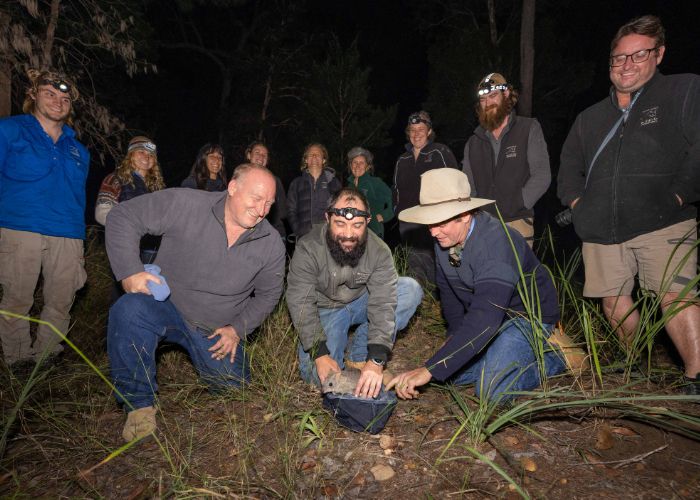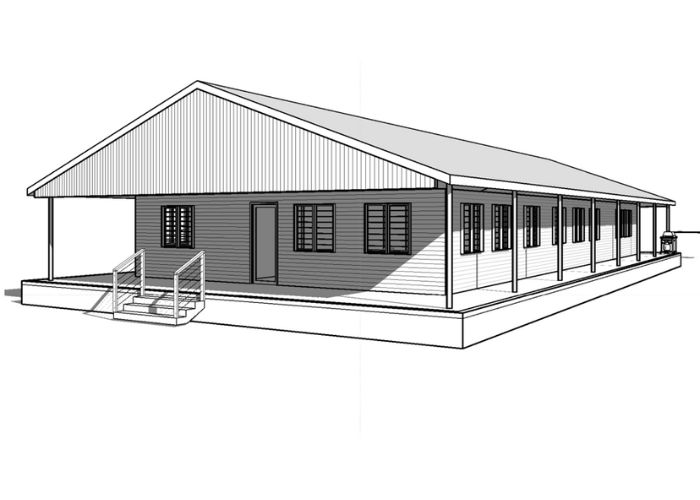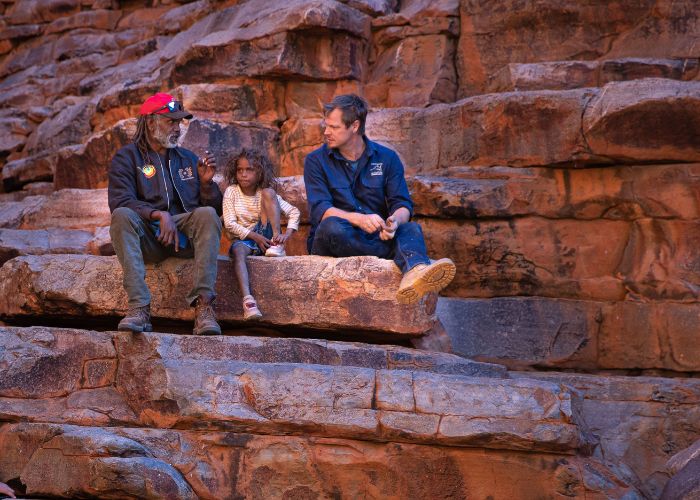Australian Wildlife Conservancy (AWC), a global leader in conservation, today launched the most comprehensive ecohealth reporting in Australia.
Despite a challenging year of intensive wet seasons and unexpected evacuations, AWC translocated 818 individuals from 13 endangered mammal species into managed safe havens and delivered Australia’s largest fire management program across 7.6 million hectares.
Over its last financial year which ended on February 28, 2023, AWC received $34.66 million in revenue and invested over 85% of funds directly into on-the-ground conservation programs that are helping to secure the future of some of Australia’s most endangered species. Investments contributed to the completion of the first fenced safe haven in northern Queensland, construction on a world-class conservation hub in WA’s Kimberley region, operating Australia’s most ambitious wildlife translocation program and more.
“Our field teams have worked tirelessly through an incredibly fraught wet season, facing evacuations and even the loss of homes for some,” Tim Allard, Australian Wildlife Conservancy Chief Executive Officer. “Following the wet season, we’ve been dealing with a complex broad-scale fire management program in anticipation of a dryer and hotter summer. And despite inflationary and cost of living challenges, our fundraising team has managed to increase income by 27% to help achieve some highly needed conservation outcomes.
“AWC’s national reintroduction program for threatened mammals is unmatched in both its scale and its impact,” Allard said. “This critical work is rebuilding multiple large and diverse populations of species which would otherwise be on a downward trajectory toward extinction. It is also restoring important ecosystem functions, such as the beneficial effects of digging animals on water and soil dynamics, as well as the dispersal and germination of plant seeds and fungal spores.”
AWC’s impactful contributions to conservation over the 12-month period include:
 Brad Leue/AWC
Brad Leue/AWC
AWC is a national leader in the reintroduction of threatened species to their former range, with the objective of reversing declines and restoring diverse, healthy ecosystems. Over the last year, AWC successfully translocated a total of 818 individuals from 13 endangered mammal species into AWC-managed safe havens and predator-managed areas. This included the first ever translocation of the critically endangered Central Rock-rat to Newhaven Wildlife Sanctuary in Central Australia and the first translocation of the Northern Bettong, one of 20 Australian mammals at greatest risk of extinction, to a newly constructed fenced area at Mount Zero-Taravale Wildlife Sanctuary in north east Qld. Western Quolls also became the 10th species translocated to Mt Gibson Wildlife Sanctuary in the WA’s Wheatbelt, setting a new conservation milestone as the greatest number of species ever restored to a single site in Australia.
 Emily Drummond/AWC
Emily Drummond/AWC
AWC’s Ecohealth Program consists of a large-scale biodiversity monitoring effort to assess the status of wildlife and threats. In the last year, the program consisted of 280,571 trap nights (camera and live trapping) and 1,863 bird surveys across 25 properties – the most extensive national-scale field monitoring program in Australia. Thanks to higher-than-average rainfall, ecologists recorded significant population estimate increases for several threatened species including the Greater Bilby population which doubled across six sanctuaries and partnerships sites, as well as the Numbat, Burrowing Bettongs and Bridled Nailtail Wallabies which were all higher in 2022 than previous years.
 AWC
AWC
During Ecohealth surveys, ecologists added 16 new species to AWC’s inventory list. Among the new discovered were the Red-tailed Phascogale, Australian White Ibis and Mulga Snake at Paruna Wildlife Sanctuary in the Avon Valley in WA; the Diamond Firetail, Rufous Songlark and Spectacled Snake at Yookamurra Wildlife Sanctuary in SA’s Murray Darling region; and the Dwyer’s Snake at Bowra Wildlife Sanctuary. The team also documented important new records of species beyond the limits of their known range such as the first record of the vulnerable Malleefowl at Dakalanta Wildlife Sanctuary on the Eyre peninsula in SA, and the detection of the vulnerable Dusky Hopping Mouse at Scotia Wildlife Sanctuary in NSW’s Murray-Darling basin, more than 100km from its last recorded location in the state.
 Strath Barton/AWC
Strath Barton/AWC
AWC is in the midst of completing Australia’s largest fire management program across an estimated 7.6 million hectares covering northern and central Australia, WA, and parts of NSW. Heavy rainfall across the country in 2022 and 2023, contributed to a surge of vegetation which triggered growth among boom-and-bust wildlife however it also increased fire fuel loads. The damp and heavy grass fuel loads have required significantly more fire management planning and resources by AWC’s operations team as well as partners who help carry out prescribed burning such as Traditional Owners and neighbours.
 Brad Leue/AWC
Brad Leue/AWC
Introduced species are destroying our landscapes, spreading weeds and robbing native wildlife of food. Earlier this year, after a four-and-a-half year battle of hide and seek, Rambo the fox was outfoxed in the Pilliga State Conservation Area in northwest NSW. AWC also removed some 1,600 feral pigs from Piccaninny Plains Wildlife Sanctuary where the pigs are extremely damaging to the fragile ecological environments.
 AWC
AWC
Viable infrastructure is critical in supporting on-the-ground conservation. In 2022, AWC commenced construction on the Kimberley Conservation Hub, a world-class conservation centre at Charnley River-Artesian Range Wildlife Sanctuary. Construction was completed on a new supporter camp and staff quarters at Piccaninny Plains Wildlife Sanctuary in Far North Queensland, operations bases were progressed at Mallee Cliffs National Park and the Pilliga State Project Area in NSW, and a new bore was installed at Kalamurina Wildlife Sanctuary in SA. Restoration of infrastructure at Mornington-Marion Downs Wildlife Sanctuary also commenced after record flooding earlier this year.
 Brad Leue/AWC
Brad Leue/AWC
AWC places a high value on collaborating with others to generate better outcomes for biodiversity and conservation efforts. Last year, AWC established a new partnership with Ngalurrtju Aboriginal Land Trust to collaborate on conservation science and land management across the 338,000 property in Central Australia. AWC also entered a historic partnership with North Australian Pastoral Company (NAPCo) to focus on enhancing conservation programs on one of Australia’s largest and oldest pastoral operations.
View the full Impact Report, here and all ecohealth reports, here.
Support Australian Wildlife Conservancy's science-led conservation work and safeguard the future of Australia's native species
Donate Now